Top 15 Military Haircuts For a Sharp & Stylish Vibe in 2025
Explore the top 15 military haircuts for men in 2025, including the buzz cut, high and tight, crew cut, flat top, and Ivy League. Learn about their origins, suitability for different face shapes, and maintenance tips.
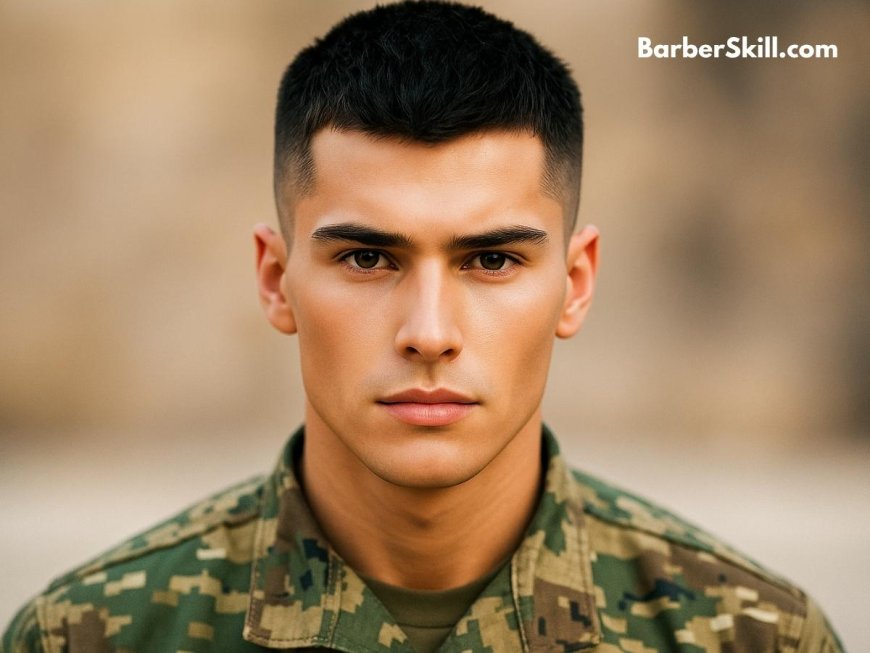
What Defines a Military Haircut?
A military haircut is any style meeting armed forces grooming standards, typically featuring tapered sides, 1-2 inch tops, and clean necklines. The buzz cut remains the most regulation-friendly option. These precision cuts prioritize uniformity, professionalism, and low maintenance while adhering to strict branch-specific regulations (like Army AR 670-1). The classic buzz cut and high-and-tight remain staples, but modern twists like tapered fades and textured crops now meet military standards.
"In my decade behind the chair at my barbershop, I've cut more high-and-tights than I can count," says Alex Carter, a master barber and grooming specialist.
"Military haircuts aren't just about regulations - they're a badge of honor that's crossed over into mainstream style."
This blog reveals 15 military haircuts with precision clipper settings, maintenance protocols, and multi-angle reference visuals, combining regulation standards with modern barbering techniques.
Buzz Cut
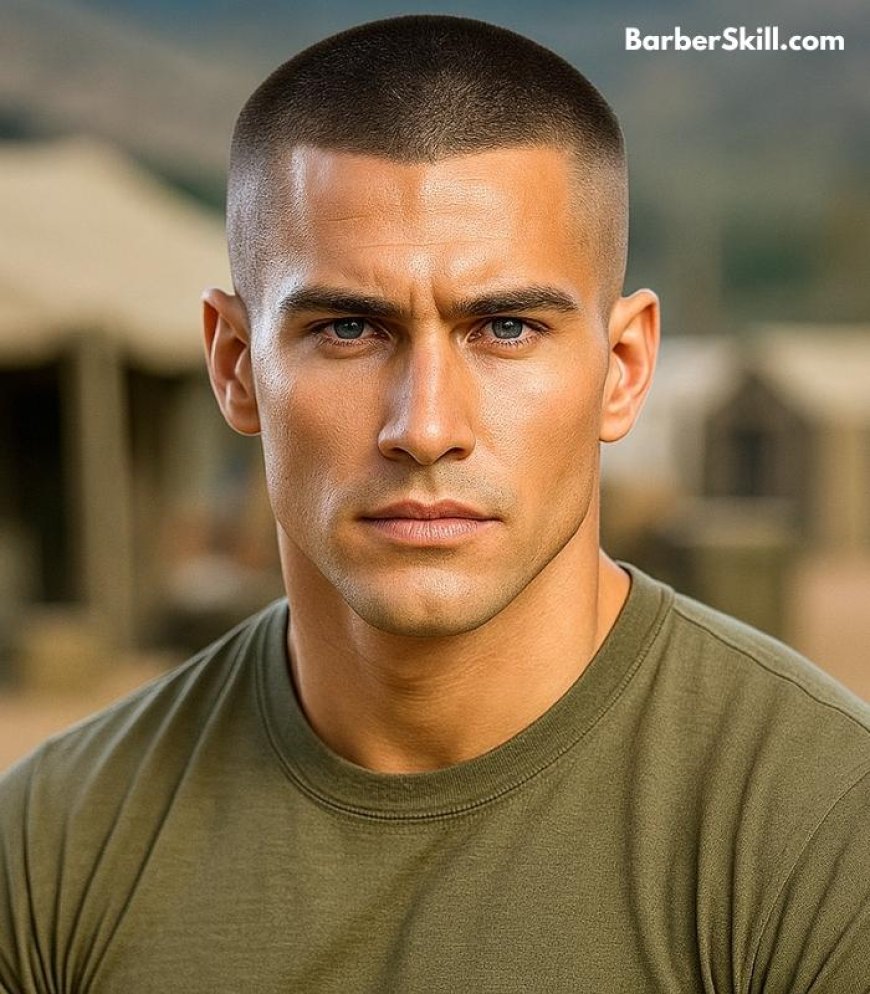
The military buzz cut, often called an induction cut, maintains a uniform 1/4-inch length all over using Wahl Balding Clippers (#00000 blade), meeting strict Army and Marine Corps regulations. Its popularity stems from zero maintenance - no styling products needed, just bi-weekly clipper touch-ups to maintain that "fresh out of basic training" look. For civilians, this cut transitions seamlessly from the barracks to corporate jobs, though I recommend leaving 1/8-inch more length (use #1 guard) for a less severe appearance. Active duty personnel should note: Coast Guard regulations allow slightly longer 1/2-inch tops compared to other branches.
High and Tight

Characterized by #00000-blade shaved sides blending into a 1-inch textured top, the high and tight remains the gold standard for Special Forces operators. At my Fort Bragg shop, we use Andis T-Outliners to create the signature "disappearing fade" that looks sharp for 10+ days. This cut requires minimal product - just matte paste (Reuzel Blue recommended) for the top section. While meeting all branch regulations, it's particularly favored by Marines for its crisp appearance in dress uniforms. Warning: Those with cowlicks should opt for a slightly longer 1.5-inch top to avoid unruly growth patterns.
Crew Cut

The military crew cut balances professionalism and practicality with 2-inch tapered sides (graduating from #2 to #1 guard) and a 3-inch scissor-cut top. Unlike civilian versions, the regulation crew cut maintains squared-off sideburns and a razor-straight neckline per AR 670-1 standards. I style this cut with a light-hold pomade (Baxter of California works best) brushed forward for inspections or swept back for off-duty wear. Navy personnel often request this cut as it withstands weeks at sea without losing shape. Pro tip: Use thinning shears on thick hair to prevent the "helmet head" effect common with this style.
Flat Top

The military flat top features a perfectly level 2-inch square top achieved with flat top combs and Andis clippers, paired with #1 guard tapered sides meeting strict Marine Corps grooming standards. This bold cut traces its roots to 1950s drill sergeants who required recruits to maintain the squared shape using nothing but water and a stiff brush. At my base barbershop, we use Hattori Hanzo shears for precision crown squaring, followed by Reuzel Red Pomade for that signature structured hold. While requiring weekly touch-ups to maintain its geometric perfection, this cut remains popular among recruits wanting to make a disciplined first impression. Air Force personnel often adapt it with slightly rounded edges for a more modern take on the classic.
Ivy League
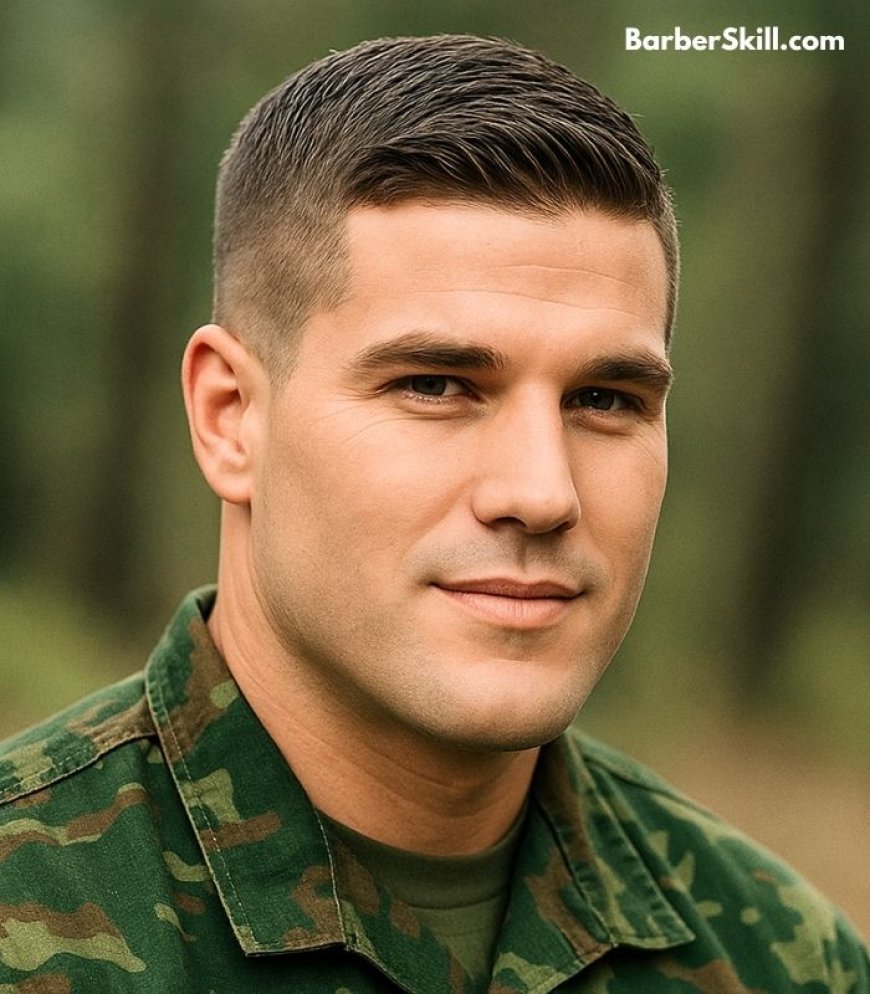
Blending military precision with Ivy League sophistication, this cut maintains 2.5 inches on top (graduating to 1-inch sides) using shear-over-comb techniques, making it regulation-compliant yet office-appropriate. The secret to its polished look lies in point-cutting the front hairline to create natural texture that stays neat without constant brushing. I recommend Suavecito Firme Hold for service members needing all-day hold during drills or inspections. Originally developed for West Point cadets, this versatile style now sees equal use among Navy officers and corporate professionals. Those with thinning hair should opt for a slightly shorter 2-inch top to maintain volume throughout the day.
Butch Cut
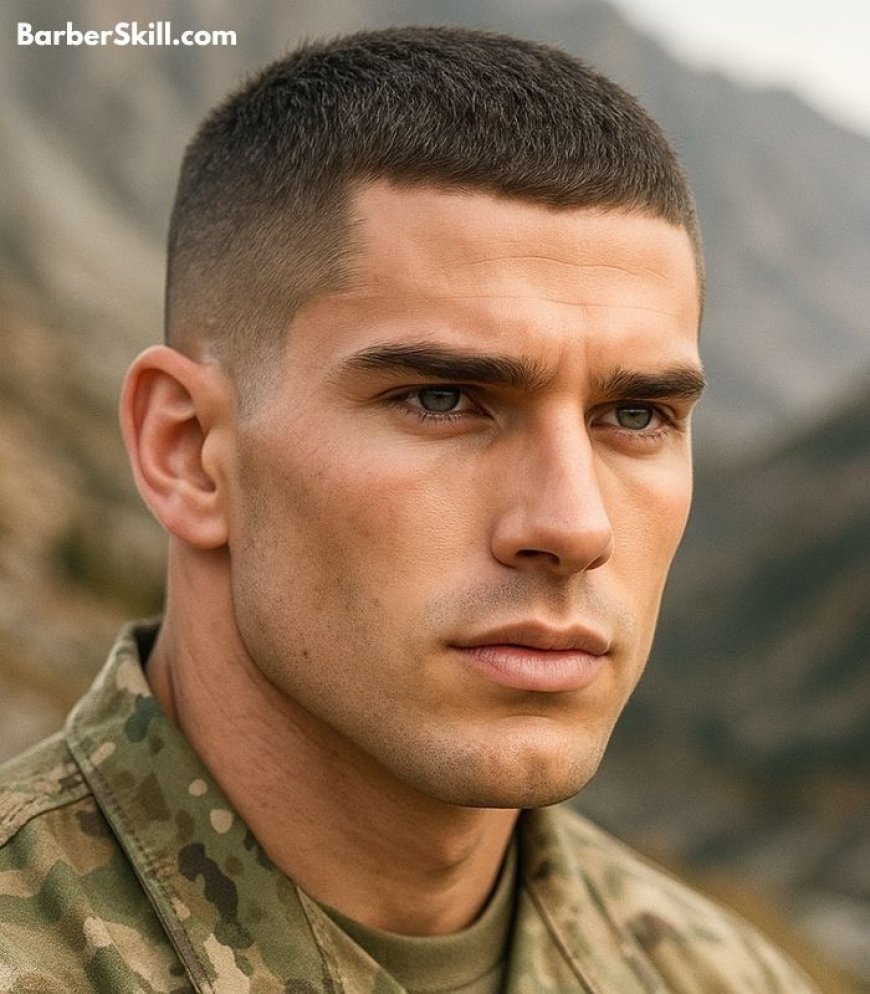
Characterized by its uniform 1/2-inch length all over (achieved with Wahl's #4 guard), the butch cut offers the ultimate low-maintenance military solution while still meeting Army appearance regulations. Unlike standard buzz cuts, we leave slightly more weight around the parietal ridge to prevent the "lollipop head" effect common with rounder face shapes. This cut requires nothing more than monthly clipper touch-ups and occasional moisturizing shampoo to prevent scalp dryness. Popular among tank crews and mechanics for its complete lack of styling needs, it's the only cut I recommend for deployed personnel without regular barber access. Just avoid going shorter than 1/4-inch unless you want the full "boot camp recruit" look.
Burr Cut
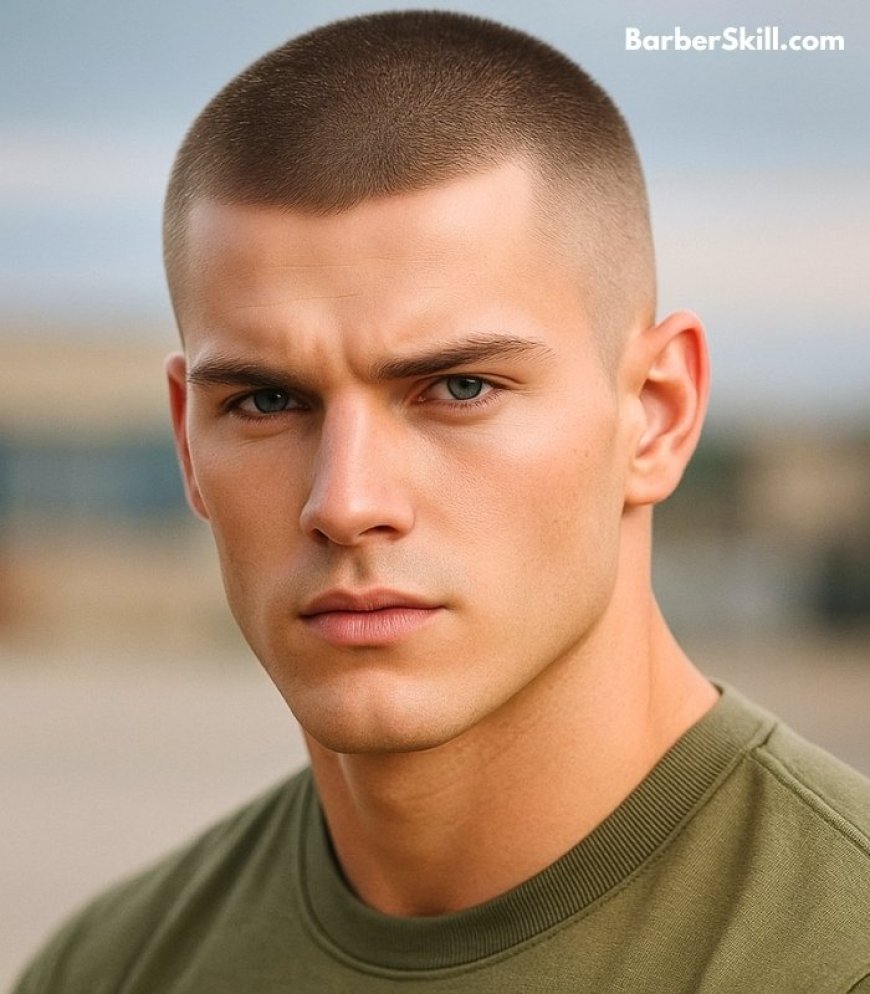
The burr cut represents the shortest regulation-approved option at 1/8-inch length (Wahl #000 blade), originally designed for submariners and desert deployment where hygiene trumps style. What sets it apart from civilian buzz cuts is the exacting neckline standards - we shave a perfectly straight line 1/4-inch above the natural hairline using Andis foil shavers. While requiring weekly maintenance to stay within regulations, this cut eliminates all grooming time and stays cool under helmets or berets. Marines undergoing crucible training often request this for its utter simplicity, though I caution those with scalp scars or moles to opt for a slightly longer 1/4-inch cut for better coverage. Always use sunscreen on freshly buzzed scalps during field exercises.
Induction Cut
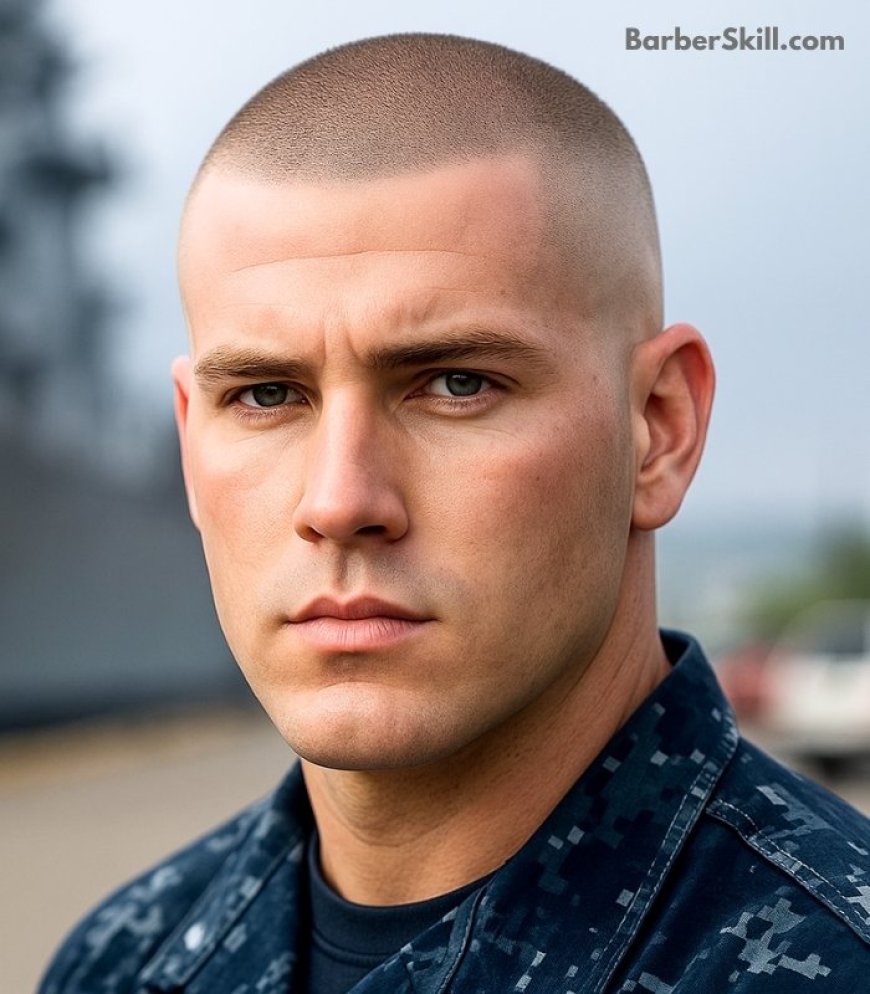
The induction cut serves as every recruit's first military haircut - a near-shaved #00000 blade cut (0.5mm length) performed immediately upon basic training arrival. This rite of passage eliminates individuality while ensuring compliance with strict entry-level grooming standards across all branches. At my Fort Benning station, we complete these in under 90 seconds using Wahl Balding Clippers, focusing on complete scalp coverage without patches. While jarring for many recruits, this cut requires zero maintenance for 4-6 weeks - perfect for the intensity of boot camp. Navy recruits often request slightly longer 1mm cuts to prevent razor burn during prolonged sea deployments.
Regulation Cut
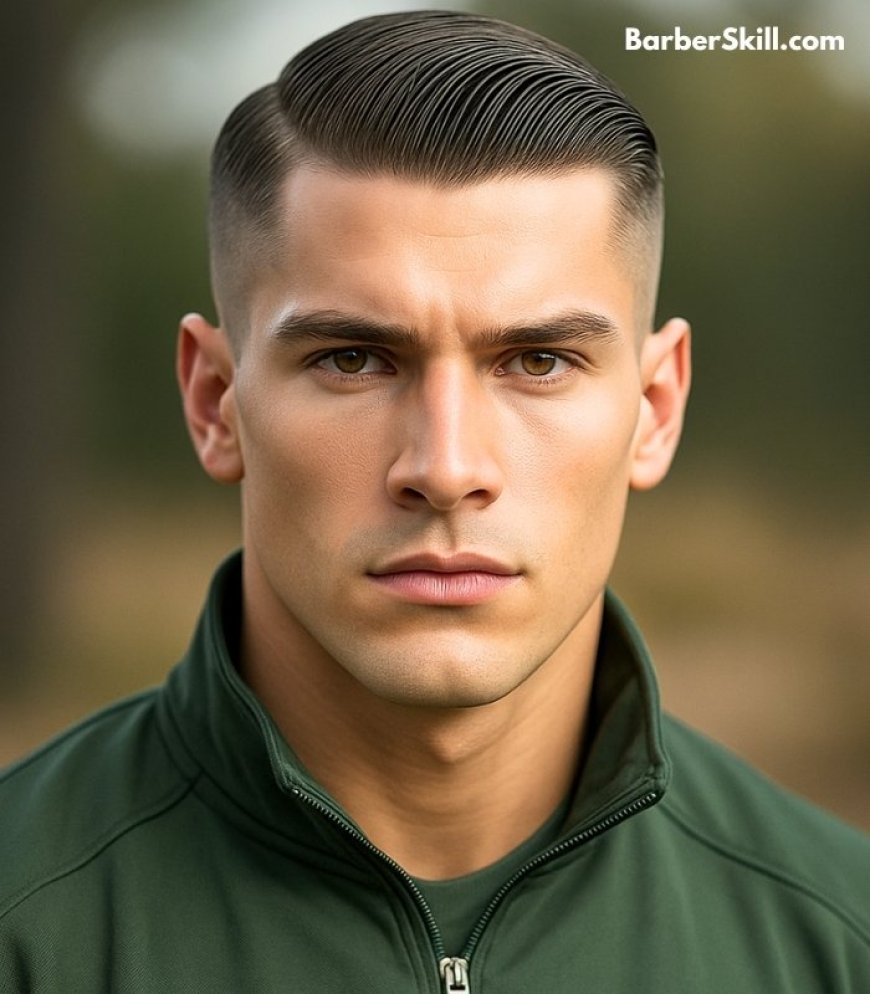
Meeting exact AR 670-1 standards, the regulation cut maintains 1-2 inches on top with tapered sides graduating from #2 to #1 guard, creating a polished yet functional appearance. Unlike civilian cuts, we emphasize squared sideburns and a razor-straight neckline using Andis T-Outliners for that distinctive military crispness. This versatile style works equally well for Air Force officers needing a professional look and infantrymen requiring low maintenance. I recommend monthly trims with light-hold matte paste (Baxter Clay Pomade) to maintain shape without obvious product use. Coast Guard personnel often adapt it with slightly textured tops for saltwater environments.
Recon Cut
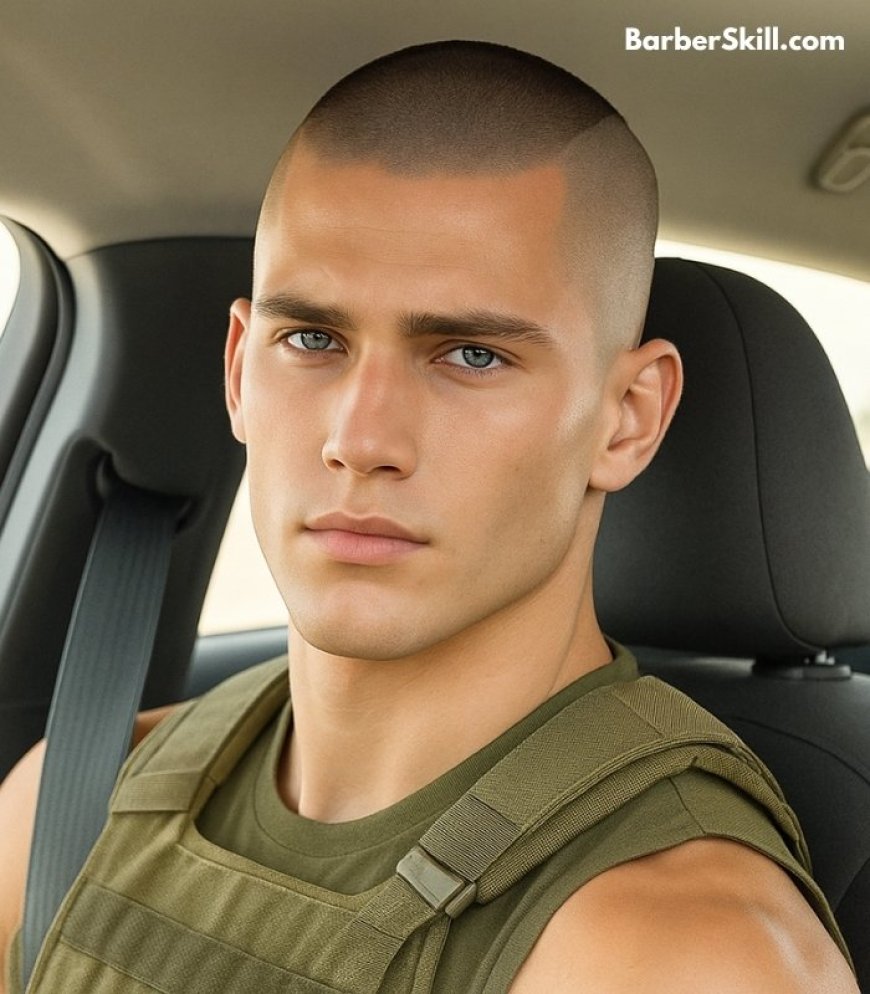
Preferred by special operations forces, the recon cut combines a #00000-blade high-and-tight fade with 1.5 inches of textured top for tactical functionality. We create this using a two-step process - first establishing the skin fade with Andis Masters, then point-cutting the top for natural movement during field operations. The signature feature is the "recon ridge" - a subtle weight line left at the parietal ridge to maintain structure under night vision goggles. Rangers and SEALs favor this cut for its 10-day maintenance window and helmet compatibility. Use sea salt spray instead of heavy products to avoid compromising tactical gear.
Fade Haircut
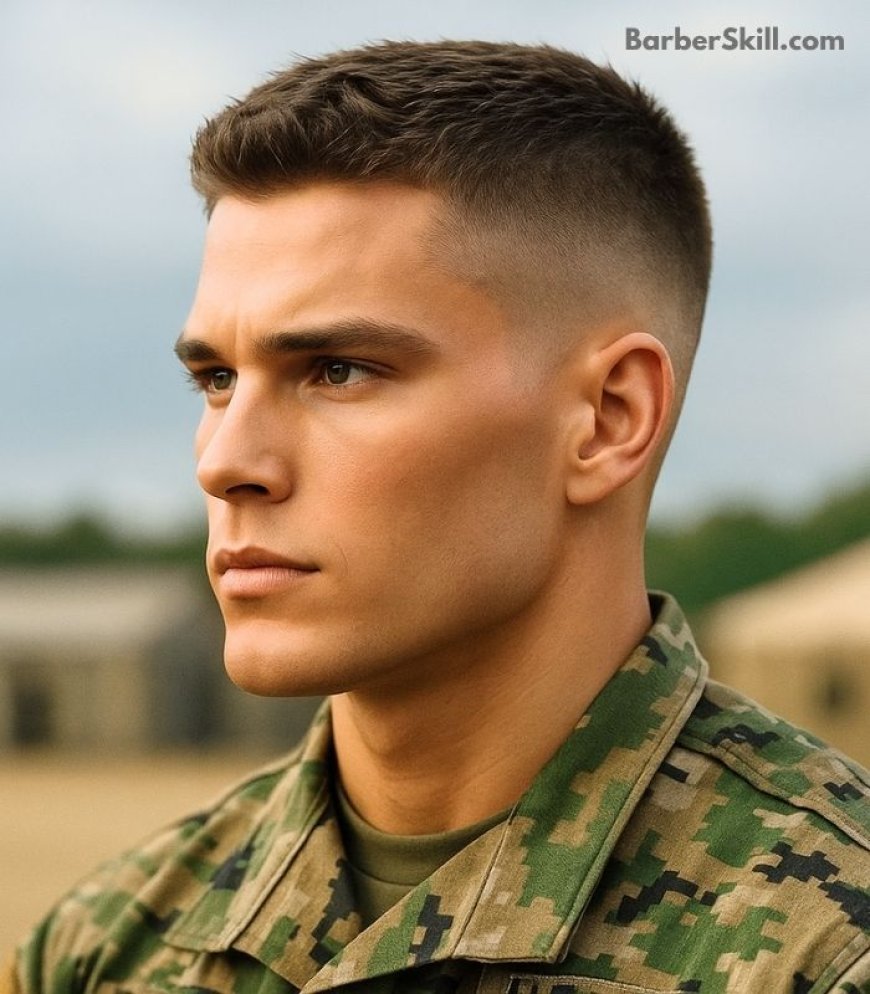
Military-approved fades maintain professional standards while incorporating modern barbering techniques, typically blending from skin (#00000) to #2 guard over 1.5 inches. Unlike civilian fades, we keep the temporal region neatly squared and avoid dramatic contrast lines per grooming regulations. My Fort Bragg clients request "field fades" - slightly longer #1 guard bases that grow out more gradually during deployments. For optimal results, use Wahl Seniors for the fade and finish with a light matte paste (Reuzel Green). Air Force Security Forces often pair this with a hard part for added sharpness in dress uniforms.
Taper Haircut
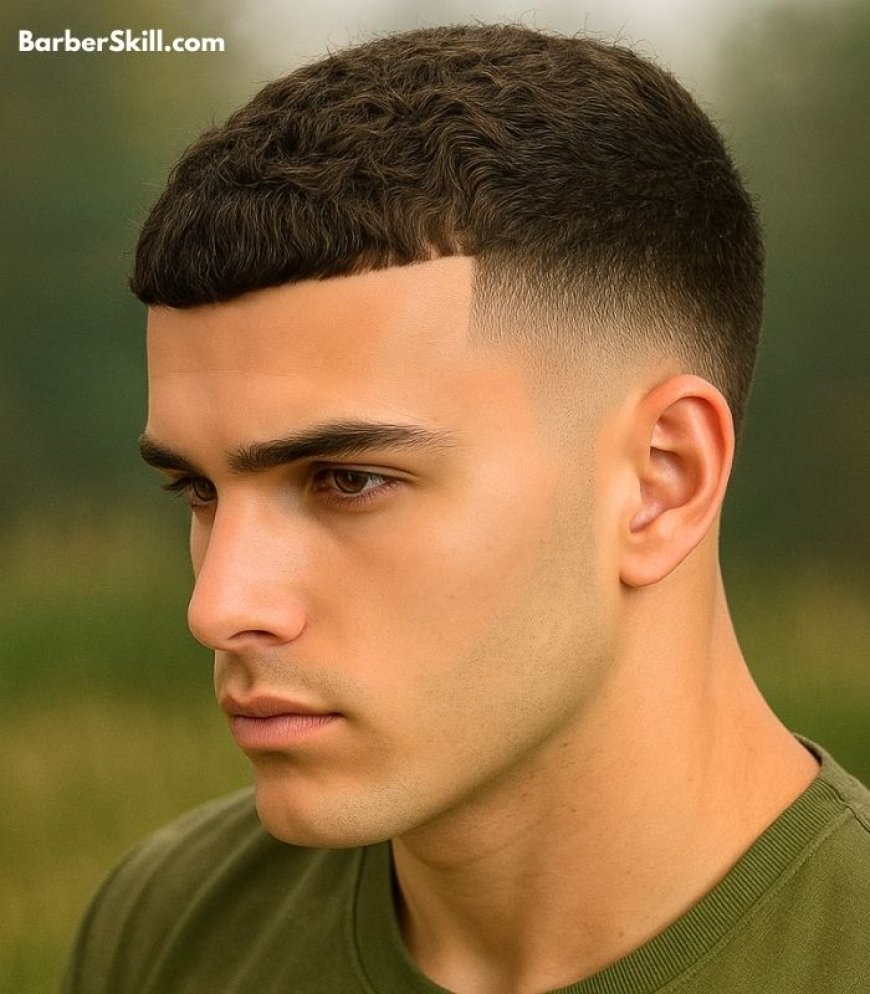
The military taper haircut offers a professional alternative to fades, gradually blending from #2 guard sides to a 2.5-inch scissor-cut top that meets all branch grooming standards. Unlike civilian versions, we maintain a clean squared neckline and sideburns using Andis T-Outliner trimmers for that distinctive military crispness. This cut works particularly well for officers needing a polished look that transitions seamlessly from dress uniforms to civilian attire. I recommend monthly trims with a light application of Layrite Cement Clay to maintain the graduated shape. Navy personnel often request slightly more textured tops to accommodate saltwater environments and frequent hat wear.
Undercut
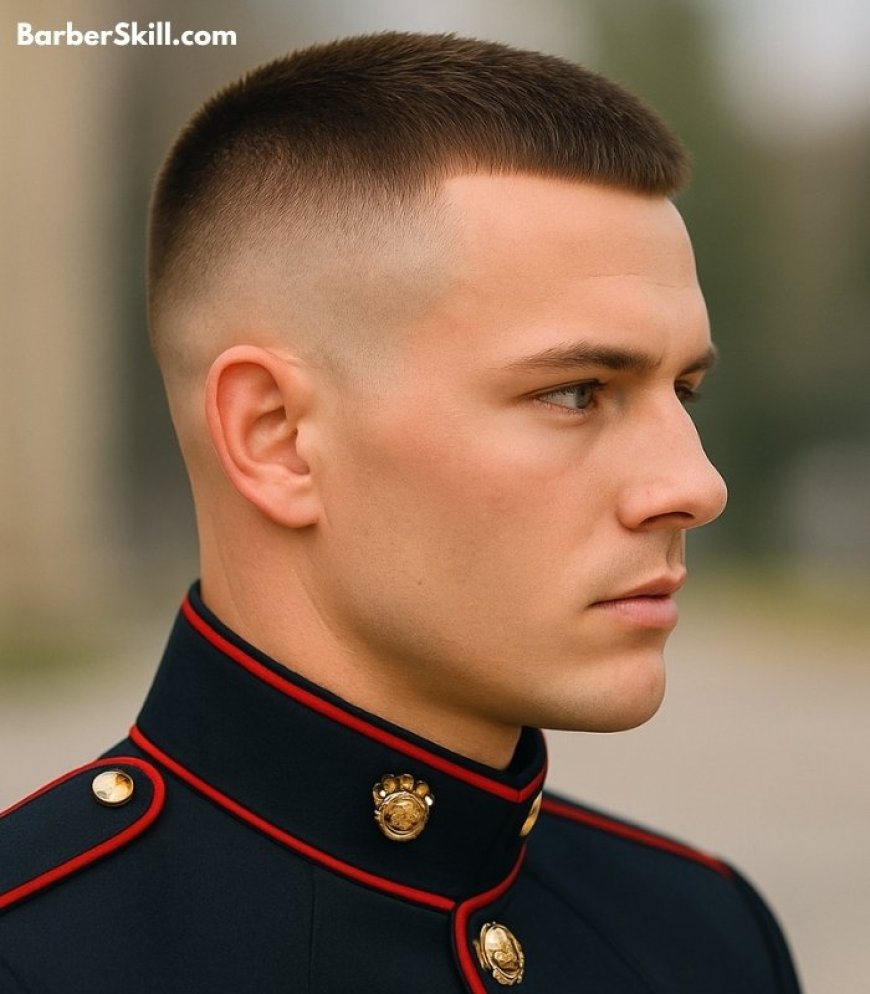
While requiring special approval in most branches, the military undercut combines regulation-compliant short sides (#1 guard) with a longer 3-inch top when tied back for formal occasions. We use Hattori Hanzo shears to create precise weight lines that maintain structure during physical training while allowing versatility. This style has gained popularity among Special Forces operators who need both professional appearance and functionality. Maintenance involves bi-weekly side trims and using Baxter Clay Pomade for controlled hold. Note: Always check with your commanding officer before adopting this cut, as some units consider it non-regulation.
Pompadour Military Style
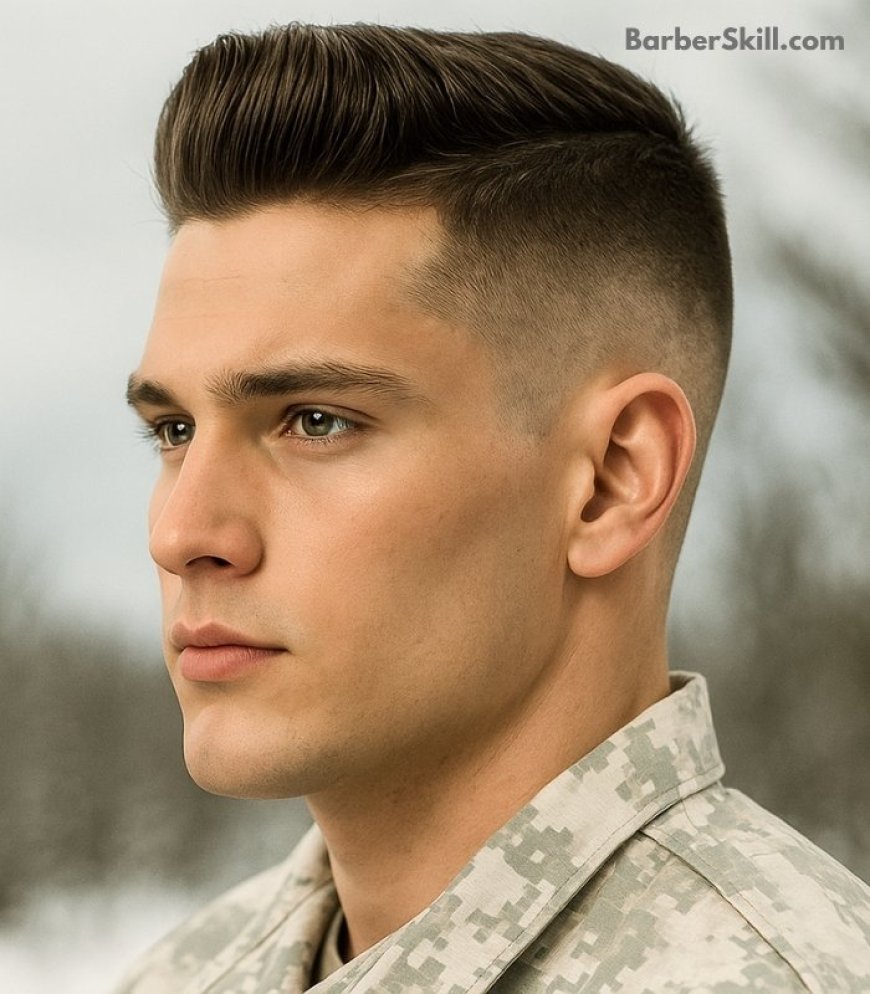
The regulation-approved pompadour maintains military standards with 2.5 inches of voluminous top (blow-dried upward with round brush) tapered into #1 guard sides. We achieve this look using Reuzel Blue Pomade applied to damp hair, then styled with military precision to avoid the "retro" appearance of civilian versions. Air Force personnel particularly favor this cut for its sharp appearance under service caps. For optimal hold during long shifts, I recommend combining matte paste with a light mist of hairspray. Remember to keep the front height below 3 inches to remain within most branch regulations.
Caesar Cut
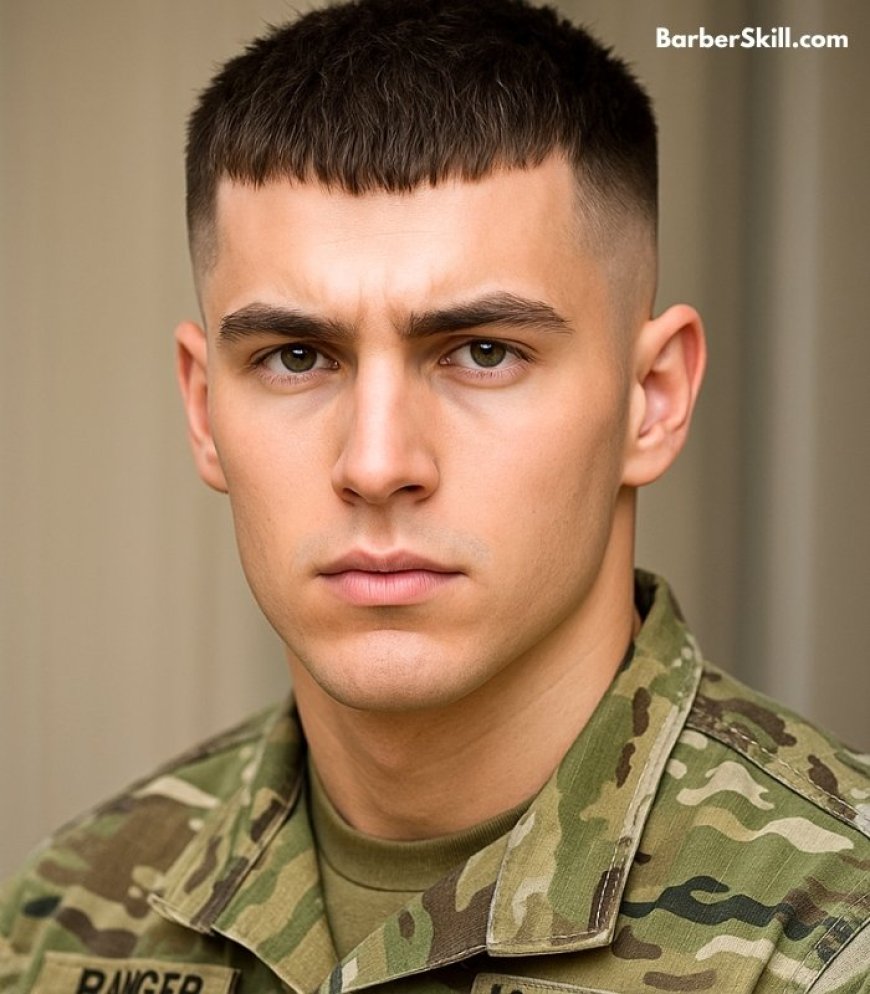
The military Caesar cut features uniformly short 1-1.5 inch length throughout with a textured fringe, originally popularized by Roman centurions and still favored by modern drill instructors. We create this cut using Wahl Seniors with #3 guard all over, then scissor-cutting the fringe to eyebrow level. This low-maintenance style requires just a dime-sized amount of American Crew Fiber for light texture and stays neat under helmets or berets. Marine recruits often choose this cut during basic training for its regulation compliance and easy upkeep. Those with receding hairlines should opt for a slightly shorter 1-inch version to maintain full coverage.
Frequently Asked Questions
What is the shortest military haircut?
The induction cut (#00000 blade, 0.5mm length) is the shortest regulation-approved style, typically given at basic training entry. While all branches permit this near-shaved look, Marines and Army recruits most commonly receive it. Submariners and desert deployment personnel often maintain this ultra-short length for hygiene and helmet compatibility.
Can I have a military haircut with curly hair?
Absolutely - textured crops and tapered fades work well for 3A-4C hair types when cut dry to assess true length. The key is using thinning shears to reduce bulk while maintaining the required 1-2 inch regulation length on top. Navy and Air Force regulations are particularly accommodating of natural curl patterns.
How often should I trim a military haircut?
Most styles require bi-weekly maintenance: high-and-tights every 10 days, buzz cuts every 14 days, and faded cuts every 12 days. Special Forces operators often stretch to 3 weeks with "field fades" that grow out more gradually. Always carry a personal trimmer during deployments.
What's the difference between Army and Marine haircuts?
Marines typically favor sharper fades (often skin fades) with squared necks, while Army regulations allow slightly longer 2-inch tops. The Marine "recon cut" includes a distinctive weight line at the parietal ridge, unlike the Army's more blended taper. Both require clean shaved napes.
Are undercuts allowed in the military?
Only with special permission - most branches prohibit dramatic disconnect. Approved versions maintain a maximum 3:1 length ratio (e.g., #1 sides to 3-inch top) and avoid extreme contrast. Always consult AR 670-1 or your CO before getting an undercut.
What products are best for military haircuts?
Matte pastes (Reuzel Blue) work best for textured styles, while light pomades (Layrite Original) suit slicked looks. Avoid shiny gels - they appear unprofessional. In field conditions, water-soluble products prevent helmet/residue issues.






